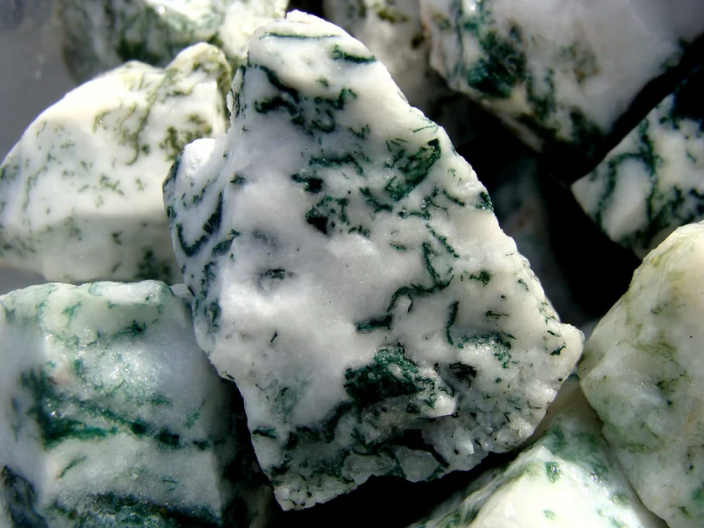
Celebrating Tree Agate
Share
In the 1800s, transcendentalist American writer Ralph Waldo Emerson often referred to nature as his “cathedral.” He wrote, “In the woods, we return to reason and faith. There I feel that nothing can befall me in life,—no disgrace, no calamity, (leaving me my eyes,) which nature cannot repair.”
For me, tree agate summons the same emotions Emerson describes. Its deep green veins snake across white or grey chalcedony like branches against the sky. Looking upon it, I think of the cathedral of nature that Emerson tended to describe in his writing. I picture forests with high canopies and the ecosystems of light and shadow that thrive underneath. Even the tiniest tree agate cabochon delivers my spirit to the forest. I get lost in those branch-like patterns and wonder what little creatures call them home. (Me, perhaps.)

So what causes tree agate’s magnificent appearance? Firstly, although it is called an “agate,” it is technically not a true agate because it does not have concentric banding. It is, rather, a type of included chalcedony—a microcrystalline quartz with trace amounts of iron, manganese, chlorite, or hornblende entrapped within its crystal structure. These inclusions are what create the arboreal patterns in the stone.
Like all natural crystals, tree agate’s formation process is extremely slow. It can take anywhere from hundreds to thousands to millions of years. The process begins in the Earth’s crust, in hydrothermal veins or deep fissures in the rock. Over geological timescales, mineral-rich water flows through this rock and deposits silica and other inclusions along the way. Such minerals accumulate, layering with iron, manganese, chlorite, or hornblende to create tree agate.

You may be wondering what differentiates moss agate from tree agate. The distinction can be tricky because both crystals are chemically the same, yet their appearances are markedly different. Moreover, some specimens can show a blend of both moss and tree agate.
The easiest way to tell the difference is by looking at their inclusions. Are they thicker, more dense, and spread across a wider area like moss? If so, you’re looking at moss agate. Or are the inclusions more defined and branch-like? If yes, then you’ve got a piece of tree agate. Are both types of pattern happening in your specimen? Congratulations—you’re holding a mossy tree agate (or, if you prefer, a tree-ish moss agate).
Further, the appearance of the chalcedony is often different in tree agate vs. moss agate. In moss agate, the chalcedony tends to be more translucent, showing darker shades of blue or grey. Whereas tree agate’s chalcedony is normally opaque and white or light grey. There is, of course, deviation from these criteria sometimes. We mustn't forget that nature cares not a single whit for the categories we humans devise!

To my mind, tree agate is a quintessential celebration of nature, particularly forests. It is a stone that promotes connection to the natural world and to our own “roots” as members of the ecosystem. Tree agate reminds us that nature does not belong to us. We belong to it.
Today I invite you, reader, to find a moment to connect with the natural world. It doesn’t matter if you’re in the city or the country. Nature is everywhere. Find a tree and lay your hand upon it. Sit in a patch of clovers. Even for a few seconds, listen to the birdsong. Remember this is where you really come from.
I leave you with this Ralph Waldo Emerson quote:
“In the presence of nature, a wild delight runs through the man, in spite of real sorrows. Nature says, -- he is my creature, and maugre all his impertinent griefs, he shall be glad with me.”
~~~
by Amber N. 2025
Dedicated to my partner Andrew Dean
